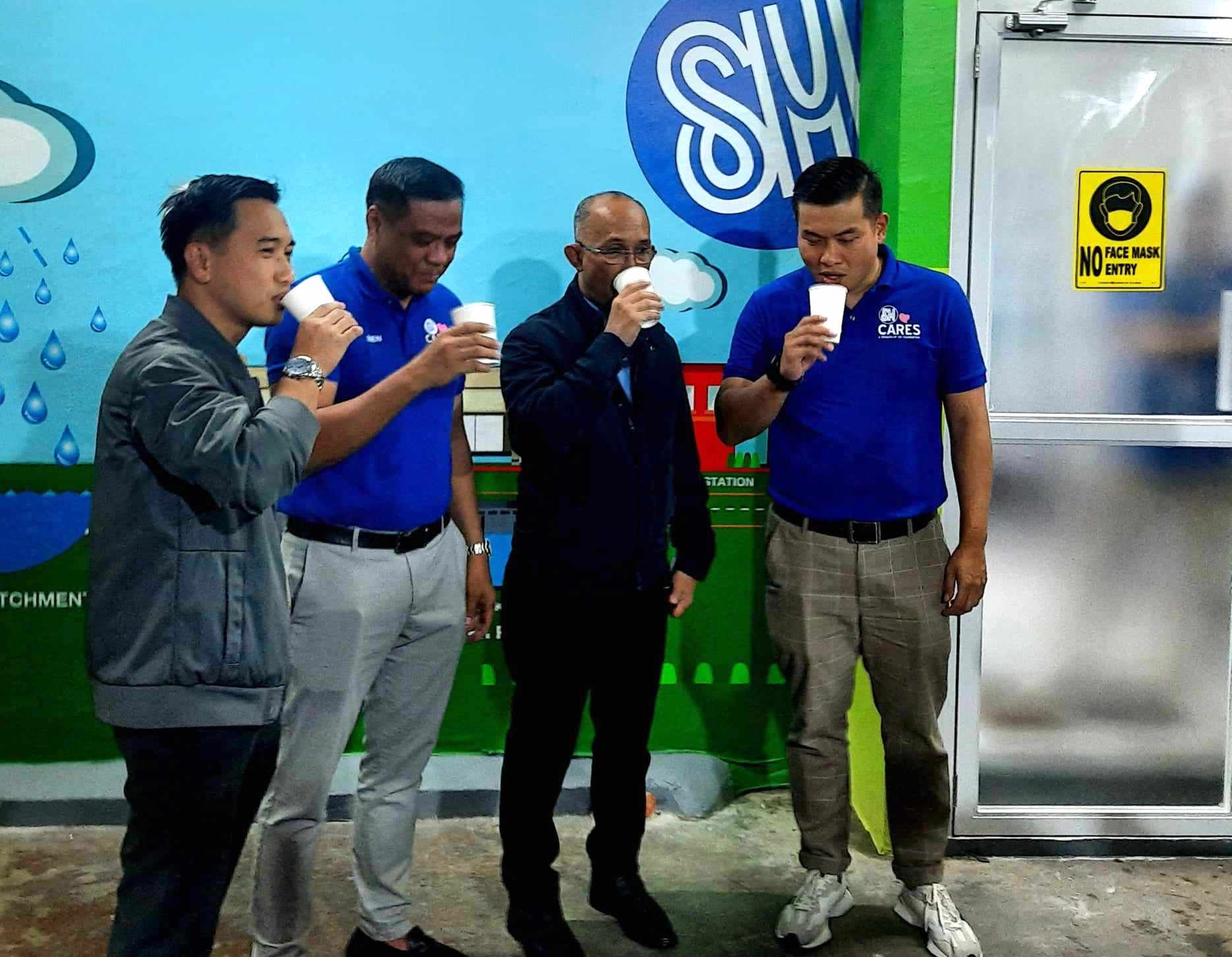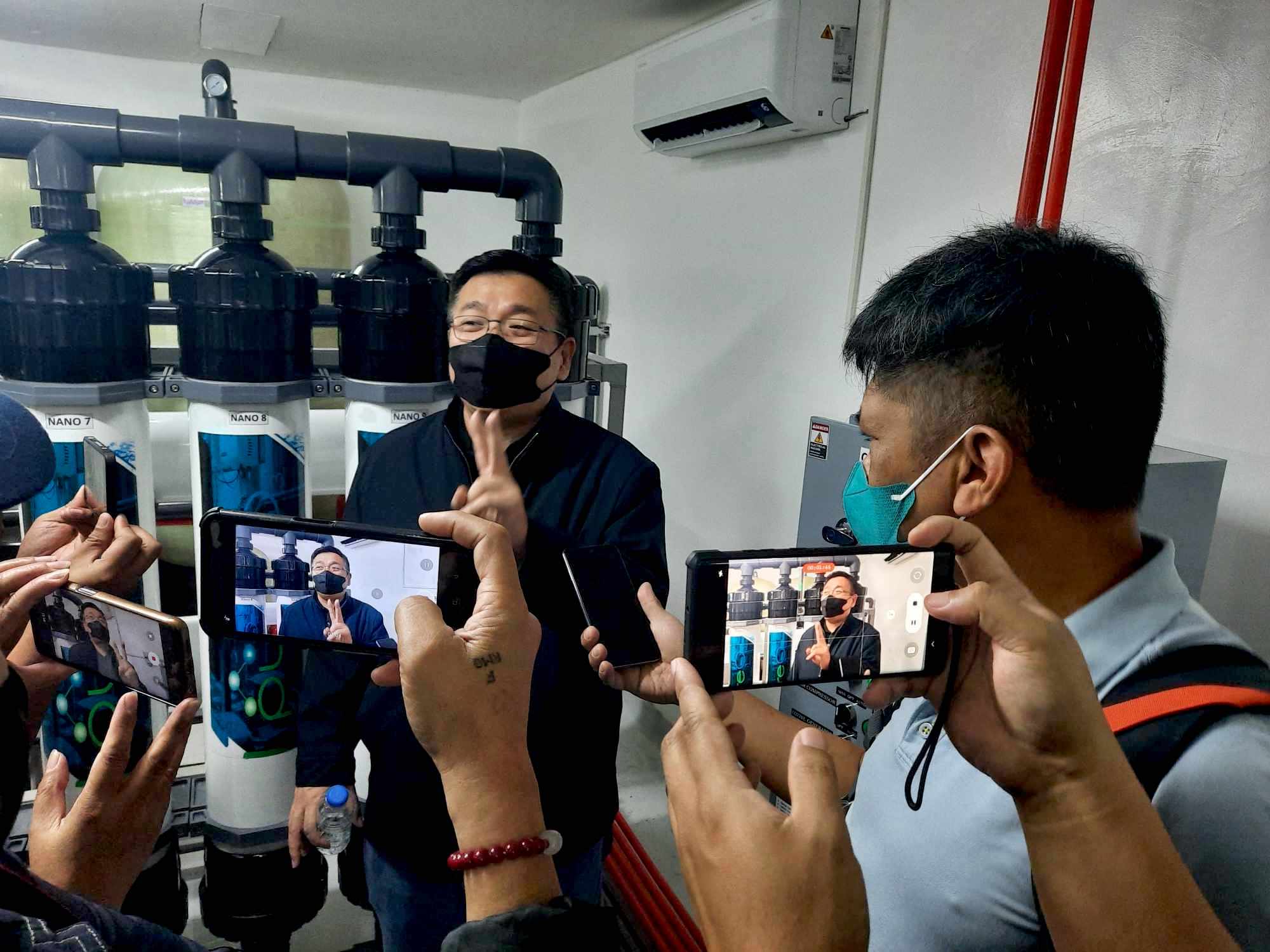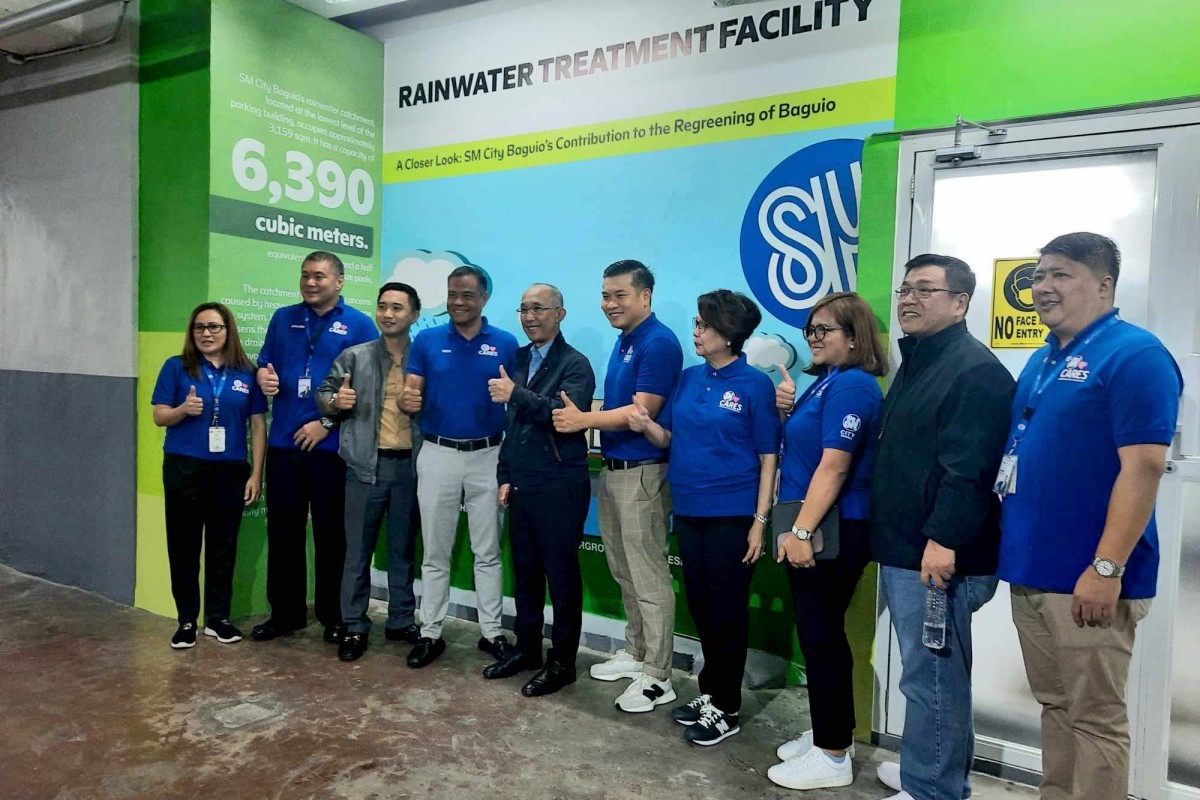BAGUIO CITY (PIA) – From rain water to drinking water. Indeed, the technology is now in Baguio City.
Baguio City Mayor Benjamin Magalong Magalong lauded the SM Supermalls and SM City Baguio for being in the forefront of promoting renewable energy, and in supporting the city government’s water conservation and recycling efforts to help address the problem of water scarcity and mitigate the effects of El Nino.
This after the SM Supermalls launched its first water treatment facility that collects rainwater and converts it to potable water at SM City Baguio on July 4, 2023.
SM officials headed by Senior Vice President Bien Mateo, Senior AVP for Mall Operations Marc Janssen Pe with Magalong and other guests led the opening of the SM Baguio Rainwater Treatment Facility, the first of its kind in a mall.
“The impact of this is huge so far as to helping mitigate the effects of El Niño especially in the scarcity of water. Eto lang ang nakita ko na facility na meron ngayon dito sa entire Syudad ng Baguio. This should serve as an inspiration to all the other owners of big establishments and big hotels,” Magalong said.

The SM Baguio Rainwater Treatment Facility will supply the mall with enough potable water that can be redistributed to mall tenants employees for various uses to help reduce sourcing from the city’s water table, leaving more water supply for the Baguio community to use.
Located at the basement of the SM Baguio Mall parking building, the RTF catchment system can store 51 million liters of water a year or equivalent to 20 Olympic-size swimming pools or 13.4 million gallons of drinking water, which can cover around one third of the mall’s annual water consumption.
Pe explained that this will supplement water consumption of the mall particularly for tenants’ use in cleaning, washing, and cooking activities. To top it all, the potable water is safe for drinking.
To convert rain water into potable water, there are six treatment processes involved namely, Multimedia Filtration, Water Softener, Activated Carbon, Ultra Filtration ken Reverse Osmosis and Ozonization.
“ We work with our trusted supplier, Pure O3 Philippines, in a six-step filtration process to convert the collected rainwater into potable water. We further strengthen our commitment as a steward of the environment and bear witness to the latest innovation in water efficiency and conservation,” said Pe.
The RTF started testing and dry run in May 2023. The filtered rainwater from the facility has passed water laboratory analysis tests, the local water tests of the Department of Health, and meets the parameter of the Philippine National Standard for Drinking Water.
Officials of the City Environment and Parks Management Office and the Department of Environment and Natural Resources have visited the facility and they support the project.
“Parang irony, di ba? We receive the highest rainfall in the country but we also experience ‘yung scarcity ng water. So, napakaganda nitong project nila na may catchment to supply even their drinking water,” said Engr. Jean Borromeo, OIC-Regional Director of the Environment Management Bureau-Cordillera.

With the RTF already fully operational, the mall will now lessen its consumption demand from the Baguio Water District, thereby increasing supply that BWD can provide to its concessioners.
Especially during summer when visitors flock to the city, scarcity of water supply is a perennial problem.(JDP/CCD-PIA CAR)



